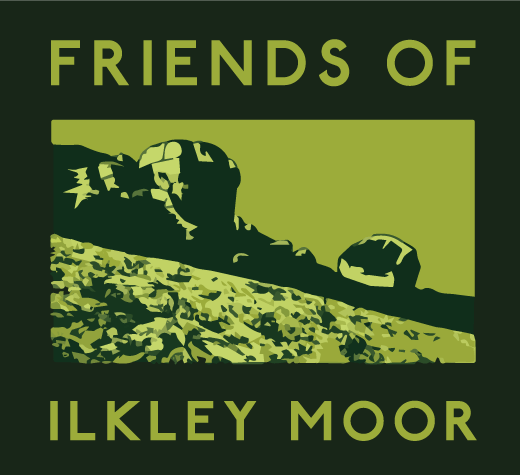Our Chairman’s Report – 10 years on
The Friends of Ilkley Moor have now been in existence for 10 years, and I have had the honour of being Chair for most of that time. During those ten years we have achieved an incredible amount and it is right that, from time to time, we should blow our own trumpet.
Firstly, we are almost certainly the largest and best funded Friends group in the Bradford area. Much of that is due to Ilkley Moor’s iconic status, but a lot was also due to the dynamism of our first treasurer Nick Rochford. Although we have never achieved his grand vision of being an organisation with a worldwide membership, it was very largely due to him that we started off with a substantial membership and a huge grant from the Heritage Lottery Fund.
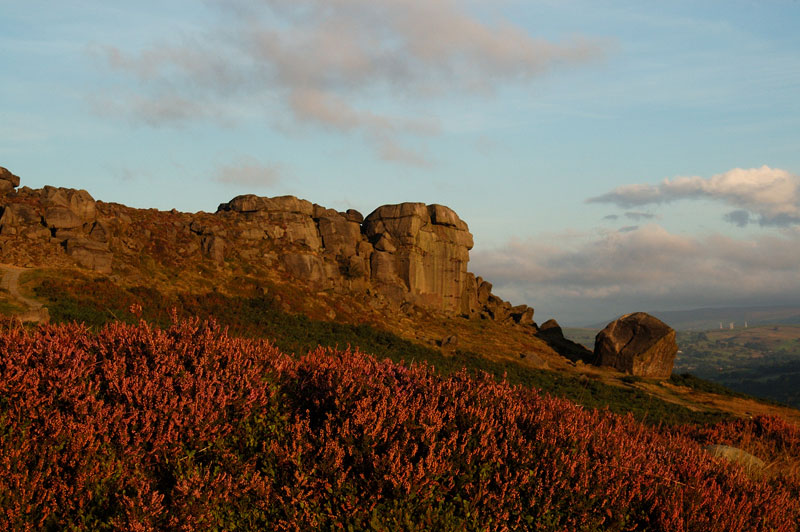
Since obtaining that first grant, we have gone on to raise impressive amounts of money from the Lottery and other funders. That money raising has again been largely due to one person – our excellent Project Office, Tracy Gray. I am ashamed to say that when the idea of a project officer was first mooted, I was fairly unenthusiastic. I could not have been more wrong. Without Tracy, we should not have achieved one half of what we have done over the last 10 years.
All told, in the last ten years, we have raised, in cash and volunteer labour, over £425,000 for Ilkley Moor (about £200,000 cash, £225,000 volunteer labour). There are accepted methods of costing volunteer labour. We have deliberately used the most conservative method to avoid any implication that we may have over inflated the value of what we have achieved.
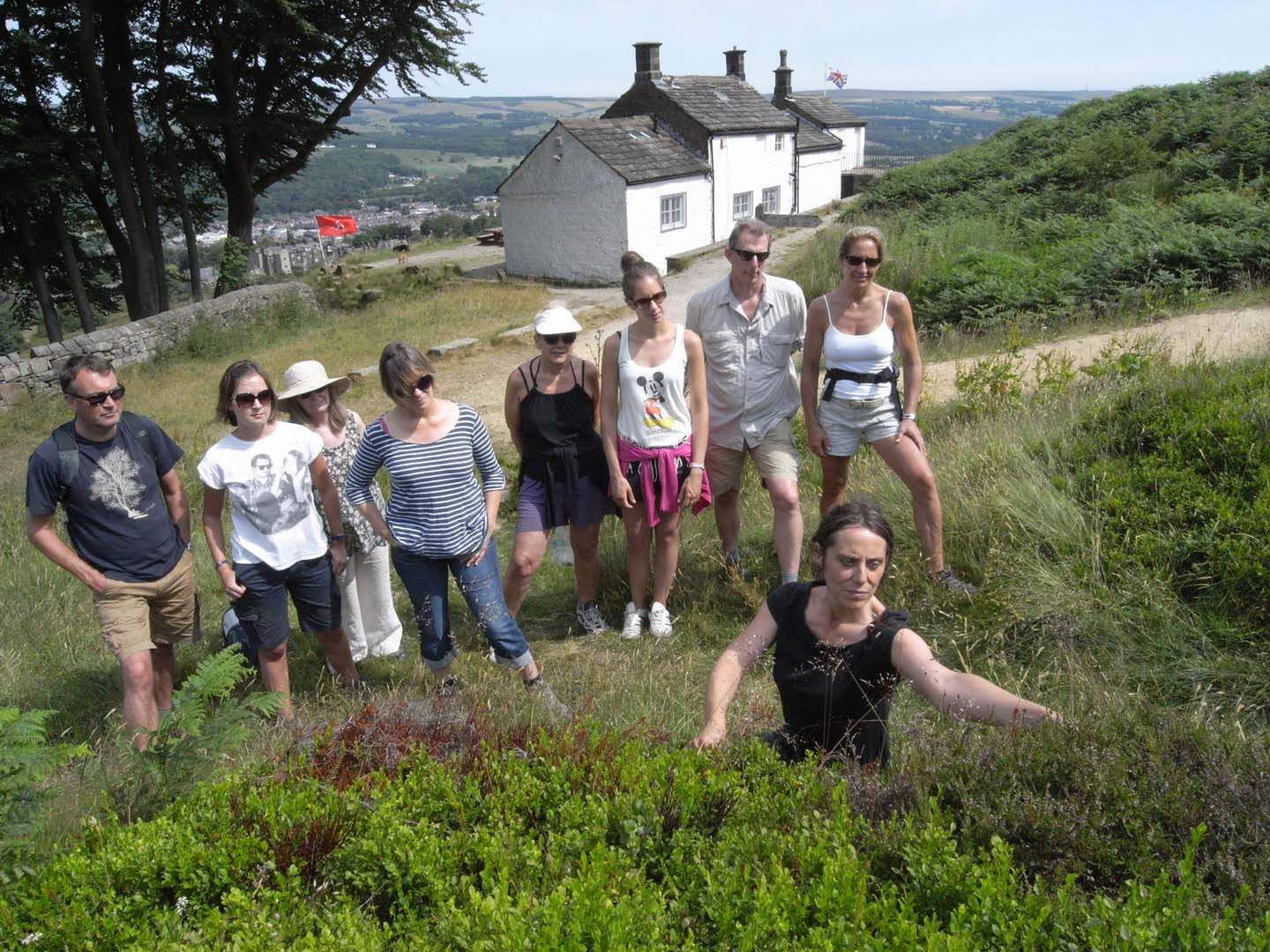
So, with all this time and money, what have we achieved?
The most important aspect of our work has been the maintenance and improvement of paths on the Moor and on the adjacent common land. When paths are not surfaced and maintained, then, in wet weather, they grow wider and wider as walkers try to go around the edges of muddy patches. Ten years ago the path across the top of the moor, from Whetstone Gate to the Dick Hudson’s path was in places a muddy morass 20 metres wide. Now that it is paved along its whole route it is only about a metre wide and the moorland vegetation has regenerated.
Once a path has been properly surfaced, not only does the surrounding moor regenerate, but also other, unsurfaced paths nearby become less popular. So a good surfaced path across the wildest parts of our moor means that there is less disturbance to the flora and fauna over a substantial area of the Moor.
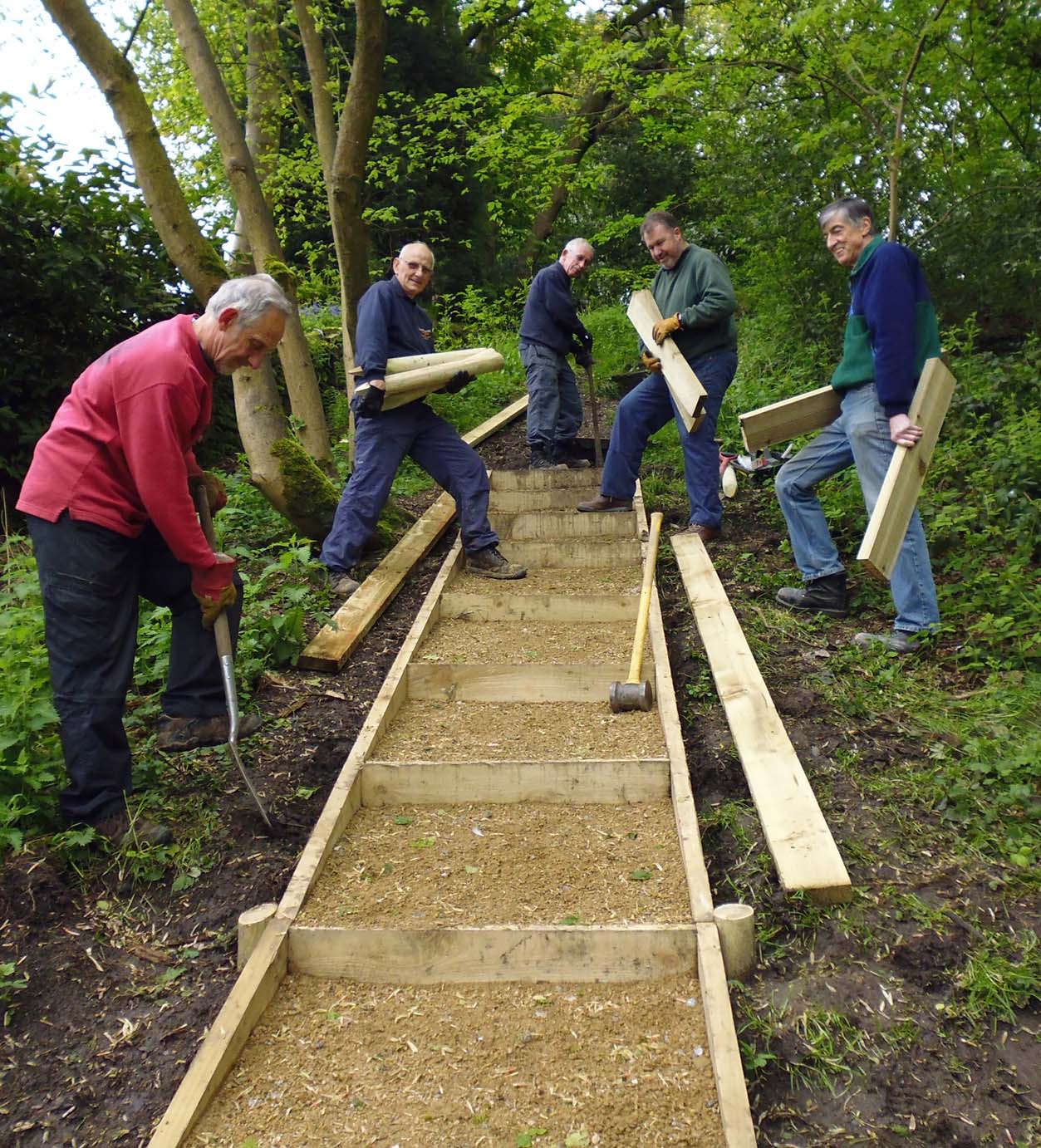
We now have good north/south and east/west routes on the Moor, but we want to improve and extend these, continuing the high level east/west route beyond Keighley Old Road and on to Crawshaw Moss and beyond towards Addingham Moorside. We would also like to extend the lower level route on beyond the Swastika Stone at least until the next wall junction.
Other paths now also need improvement to enable better access: those behind Craiglands, the path on from the Tarn towards the Cow & Calf, and the path from the Cow & Calf beyond Backstone Beck. Some of these paths can be tackled with volunteer labour; others will require the use of expensive equipment (i.e. a helicopter to fly in materials). For all these jobs we are always constrained by finances and by the exigencies of the weather. But your committee believes that this is vital work that we must undertake whenever money and conditions make it possible.

In addition to this major work of path construction and maintenance we have done myriad other minor works on the Moor. Our volunteers have mended dry stone walls, installed fences and gates, dug ditches, cleared culverts, cleared vegetation such as invasive rhododendrons. There is never an end to the work needing to be done. Most recently we have been engaged in remedying the defective drainage around the Tarn and the result is that, for the first time in years, one can walk around the Tarn in winter without splashing through puddles.
One perennial task undertaken by your volunteers (every month or so in the summer) is cleaning in and around the paddling pool.
It is simply not possible to enumerate all the many tasks willingly undertaken by our dedicated group of volunteers. They are out nearly every Tuesday, regardless of the weather, working to maintain our Moor.
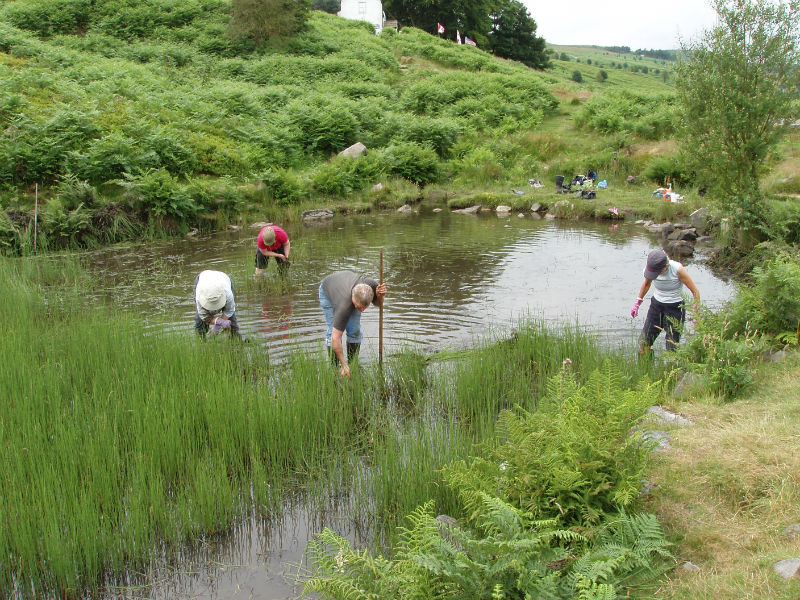
In addition to the physical work done on the Moor, we are conscious that we are the custodians of a Site of Special Scientific Interest. Thus we are concerned to properly map the habitats on the Moor with a view to protecting them. Our major grant in the last year has been that, obtained by Tracy, from the Heritage Lottery Fund, to undertake our Nature for All project. This project involves volunteers in comprehensively mapping the species and habitats along the principal watercourses running off the Moor. This data is being mapped using a Geographic Information System to provide a detailed baseline survey that can subsequently be used to determine changes in the flora and fauna of the Moor.
In the past there have been many statements about the management of the Moor and how it is improving or damaging habitats. The data we are acquiring will enable us to have good, objective information on habitat condition (against which we can monitor any future changes), and thus will allow us to make much more factual statements on the subject.
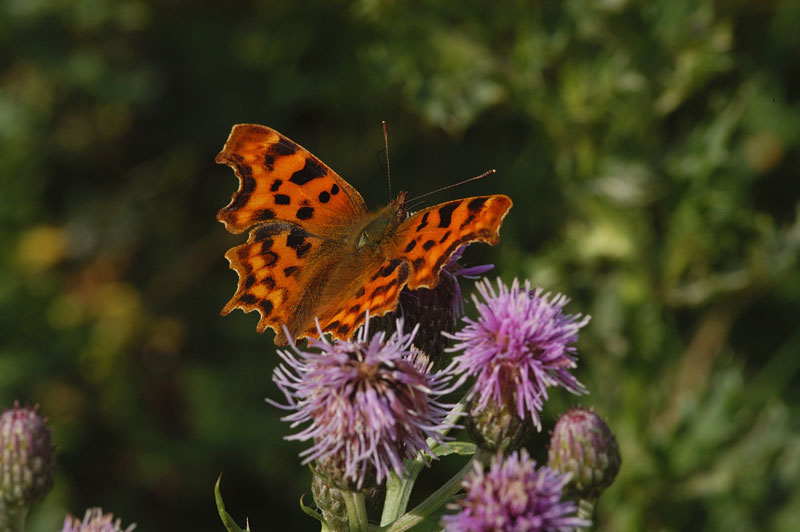
There is one aspect of the management of the Moor that has recently come to prominence and that is the issue of flooding and flood mitigation. In Ilkley there are three principal sources of flooding: flooding from the Wharfe, flooding from ground water and run off from the Moor. We have been disturbed to find that there seems to be no systematic recording of floods caused by run off and we are intending to remedy this ourselves. We are also actively involved in mapping the watercourses on the Moor and will be trying to encourage water retention, by the creation of ‘soft dams’ in the streams running from the Moor. We also wish to explore whether it may be possible to encourage the growth of sphagnum bogs on the Moor.
We are additionally now actively involved in improving the signage on the Moor. We have commissioned an attractive schematic map to be installed in Darwin Gardens (by local artist Hattie Clark). We are very pleased by the sign that Bradford proposes to erect at the Tarn, which mentions (on the centenary of the granting of women’s suffrage) that Mrs Pankhurst addressed a crowd of ‘some thousands’ there in 1908.
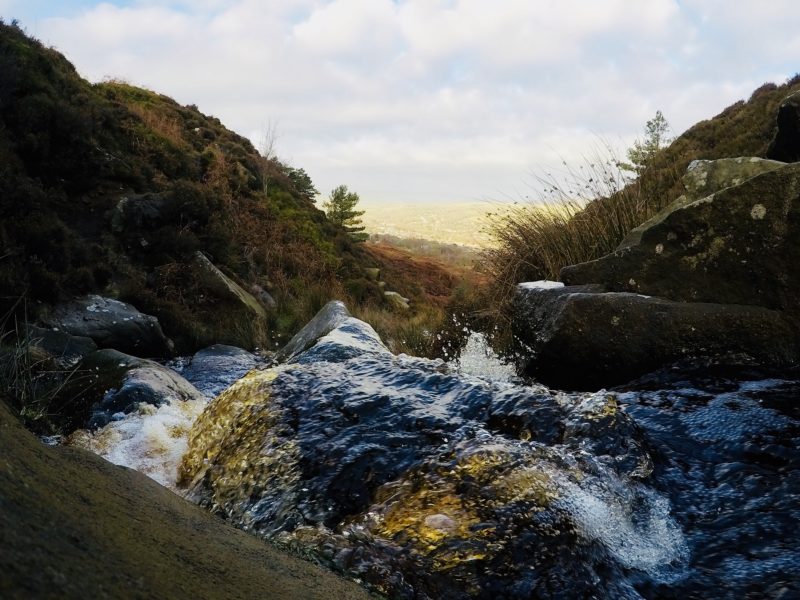
We know of the concern that members have about irresponsible dog owners, so we have obtained bulk supplies of leaflets on the subject that are freely available to members. There are three principal areas of concern. Professional dog walkers who walk large numbers of dogs over which they have insufficient control. Dog owners who pick up their dogs’ faeces and then leave them in plastic bags dumped on the Moor and dog owners who fail to appreciate that their dogs, running freely on the upper slopes of the Moor in the bird-nesting season are inadvertently disturbing the nesting birds. Education is the only realistic way to deal with these problems and we hope that the distribution of leaflets will help.
Of course, we have had failures. The most notable has been our failure to make any real progress in controlling bracken. I regret to say that this is probably something that we are never likely to achieve, though we continue to explore possible solutions. Although the general control of bracken has been a failure, Tracy and our volunteers do work hard to control it in limited areas where it is encroaching on particular habitats (most notably where wetland plants are to be found).

Finally, we try our best to represent the interests of the Moor in a number of fora. So I have attended local meetings with our MP and others on a diverse range of subjects (most notably flood mitigation).
There is one last topic that must be mentioned. During the last ten years, Bradford has leased the shooting rights on the Moor. Before that time management of the Moor was undertaken (very ably) by Richard Perham and the Countryside Service. Many statements have been made about the alleged benefits and disbenefits of the shooting lease. FoIM has never taken an absolutist position on the subject. Indeed, for the first five years we had a policy of strict neutrality. That policy changed for a number of reasons, most notably that the overwhelming majority of our members opposed the lease.
It is our considered view that the large sums of money that the Shoot claimed to spend maintaining the Moor, were in reality payments (largely the wages of gamekeepers) to benefit the Shoot, not aspects of the Moor relevant to the general public. There is one aspect of the activities of the Shoot where we acknowledge that there was considerable public benefit and this was in supporting fire fighting. We cannot replicate this, but we have already suggested that our volunteers should be equipped with beaters, and that we should institute a telephone tree, to call out volunteers when a fire is suspected. The Fire Brigade was insistent that we should not do this without first having had our volunteers trained. We are still waiting to hear whether the Brigade will offer training to our volunteers.
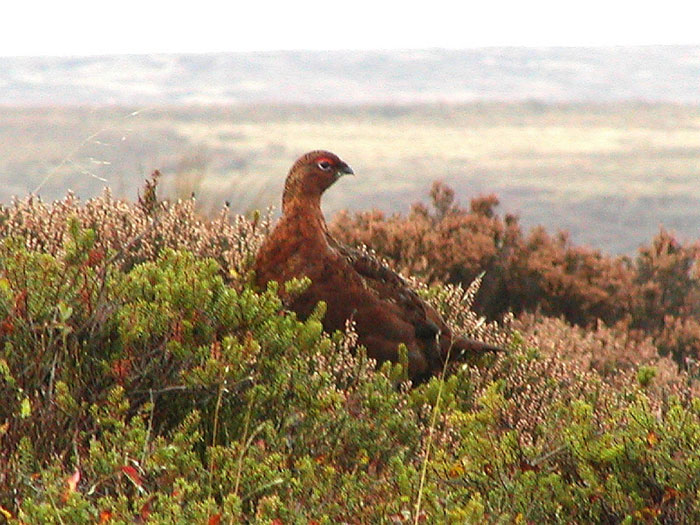
In conclusion, we have had ten good years maintaining and conserving the Moor. We look forward to the next ten years, but we are conscious that we can only continue so long as we have a large and active membership and for this we urge all our members to play their part by ensuring that no opportunity to enrol new members is missed. We are particularly pleased that this year we have enrolled several new corporate members and we are actively exploring ways of encouraging new corporate members by offering special services (such as team building days) for them.
And finally, FoIM is fortunate to have a very effective and active committee. I would wish to record my particular thanks to them.
Owen Wells
Chair, Friends of Ilkley Moor
